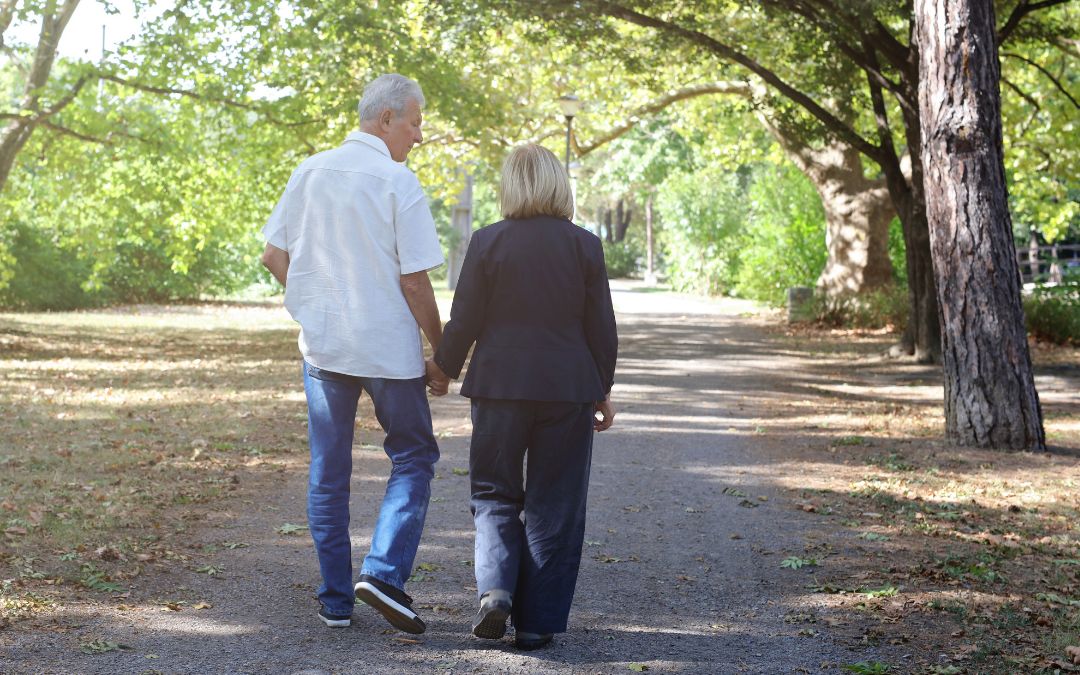Parkinson’s Disease (PD) is a progressive illness caused by the breakdown of cells in the nervous system. While not everyone diagnosed with PD will have identical symptoms, the disease tends to progress similarly. The typical pattern of Parkinson’s is defined by five stages of neurological decline. Read on to learn what are the five stages of Parkinson’s disease and how you can help your loved one through each one.
Stage One
In the initial stage of Parkinson’s, the person has mild symptoms that generally do not interfere with their quality of life. You may miss signs because they’re often so minimal, and doctors may struggle to make a diagnosis at this point. People may notice changes in their posture, walking, or facial expressions. Tremors or other motor symptoms may occur, typically localized to one side of the body.
If your loved one is diagnosed in the earliest stage of PD, the best thing to do is gather as much information as possible. Make it your goal to understand what are the five stages of Parkinson’s Disease and how you can navigate them all. Learn about the disease’s progression and begin planning for the future. A doctor may prescribe treatment to counteract the early symptoms, but generally, your loved one will be able to conduct life as usual.
Stage Two
While still early in its progression, stage two of PD involves more noticeable symptoms. Stiffness, tremors, and rigidity spread to both sides of the body. Trembling and changes in facial expressions or speech may also occur. Because balance is not yet impaired, most people are still able to live independently. However, daily activities may take more time to complete and your loved one will likely appreciate your assistance. Occupational therapy may be beneficial at this stage to help your loved one with new strategies and techniques for completing daily tasks. Additionally, caregivers should help with refilling and administering medication as needed.
Stage Three
With the progression into stage three of Parkinson’s, you may notice impaired balance. Movements become increasingly slow and completing daily activities is more difficult. Because of changes in balance and mobility, falls occur more frequently during this stage of PD. While your loved one is likely still able to live independently, be sure to make their home safe for them to move around. Additionally, speech therapy or vocal exercises in this stage are beneficial for improving communication.
Even if your loved one can live independently, it’s a good idea to start researching care plans such as assisted living communities or part-time help. Too often, people begin the process when their loved one has an immediate need. Then they feel stressed or rushed into making a decision. Look for communities or care options that have experience with and a passion for Parkinson’s. It may be helpful to find communities with on-site access to Occupational Therapy, like Vineyard.
For more information, read our guide: When’s the right time to find senior living options?
Stage Four
As your loved one progresses into stage four of Parkinson’s, their condition will become more severe and limiting. A continued decline in mobility will require assistance with walking and completing basic tasks. Your loved one will likely need help with the activities of daily living. Here’s where your early research will come in handy. This might also be the phase where it’s best to start the transition so your loved one can have part- or full-time professional help.
Caregivers should assist loved ones with tasks as needed while encouraging them to move about as they are able. Overall, be patient with your loved one and allow adequate time for their slowed movement.
Stage Five
Stage five is the most debilitating stage of Parkinson’s disease. Advanced stiffness will likely make standing or walking impossible. In this stage, your loved one is unable to move around independently but instead will require a mobility device (i.e., walker or wheelchair) and full-time assistance. Many PD sufferers end up bedridden as the disease progresses into its most advanced stage. Additionally, your loved one may experience difficulty swallowing, anxiety, general confusion, hallucinations or delusions.
Understand the Progression of Parkinson’s to Help Your Loved One
Parkinson’s disease is progressive, meaning it worsens over time as it moves through these five stages. However, the disease is also highly individual and impacts people differently. The variety of symptoms, severity and speed of progression differs for each individual. In general, the role of a Parkinson’s caregiver is ever-changing, and their demands tend to increase as the disease progresses.
If your loved one is recently diagnosed, knowing what the five-stages of Parkinson’s Disease mean will help you plan for the journey ahead. Most importantly, don’t feel bad for needing additional help. As a loved one and caregiver—you can’t do it all on your own. Professional, expert assistance will ensure your loved one’s progression is monitored and properly managed, and you can focus on spending quality time together.

